Travelling by train in Japan... |
| | 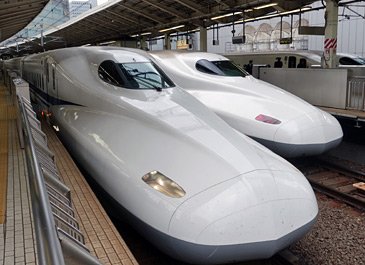 |
| | A series N700 shinkansen at Osaka. These trains link Tokyo, Kyoto, Osaka, Hiroshima and Hakata at high speed... Photo courtesy of James Chuang. |
The railways are the way to get around Japan. On this page you'll find an introduction to train travel in Japan, plus: Japan has an extensive and efficient rail network and you can pretty much assume that the trains in Japan will go to all the cities and towns you want to visit. Travelling by train in Japan is easy, as the stations have signs and departure boards in English as well as Japanese. Japanese trains are very clean and modern, and are amazingly punctual. Two classes of seating are provided, ordinary class and 'green car' (1st class), the latter indicated by a green 'clover' symbol next to the entrance door. As you'd expect, Green car seating has more legroom and seats are arranged 2+2 across the coach, whereas ordinary class seats are normally arranged 2+3. However, travelling standard class is perfectly adequate. Check train times & fares in Japan: www.hyperdia.com or www.jorudan.co.jp (English button at the top).Map of Japanese train routes: See map hereHere are some sample journey times, frequencies & prices...
Japanese train times & fares |
| Journey: | Distance | Time by Nozomi * | Time by Hikari * | One-way fare: | Train frequency: |
| Tokyo - Kyoto | 513km, 320 miles | 2 hours 18 min | 2 hours 49 mins | ¥13,720 (£101, $161) | Every 5-10 minutes, direct. |
| Tokyo - Shin-Osaka | 552km, 345 miles | 2 hours 18 min | 2 hours 33 mins | ¥14,250 (£105, $168) | Every 5-10 minutes, direct. |
| Tokyo - Hiroshima | 894km, 559 miles | 4 hours 8 min | 5 hours 2 mins | ¥18,620 (£137, $220) | Every 10-20 minutes, direct. |
| Tokyo - Nagasaki | 1,328km, 830 miles | 7 hours 14 min | 8 hours 21 mins | ¥24,980 (£183, $294) | Every hour or better, change at Hakata. |
| Kyoto - Hiroshima | 380km, 237 miles | 1 hour 36 min | 1 hour 59 mins | ¥11,290 (£83, $133) | Every 10-20 minutes, direct.. |
| Hiroshima - Nagasaki | 434km, 271 miles | 3 hours 10 min | 3 hours 25 mins | ¥12,090 (£89, $142) | Every hour or better, change at Hakata. |
* Nozomi = fastest Shinkansen train type, Japan Rail Passes not valid. Hikari = next fastest Shinkansen train type, Japan Rail Passes valid. Children aged 0 to 5 travel free, children aged 6 to 11 travel at half fare, children aged 12 and over pay full fare. Rail fares in Japan are expensive, and if you are an overseas visitor a Japan Rail Pass can be the cheapest way to travel even if you are only planning one return trip from (say) Tokyo to Hiroshima. See the Japan Rail Pass section.
What are Japanese trains like? |
Bullet trains or 'Shinkansen'... Everyone has heard of Japan's 'bullet train' lines, more properly known in Japan as 'shinkansen'. These are high-speed lines, built to European and North American standard gauge (4' 8½"). The first shinkansen was the Tokaido Shinkansen linking Toyo, Kyoto and Osaka opened in 1964, later extended as the Sanyo Shinkansen to Hiroshima, Kobe and Hakata. There are now a whole range of 'shinkansen' lines linking all the most important cities in Japan, including Niigata, Tokyo, Kyoto, Osaka, Hiroshima, Hakata and Kagoshima. The trains have two classes, ordinary seats (2nd class) and 'Green Car' seats (1st class). Reservation is normally required on each train, but there's usually one or more 'unreserved' cars.
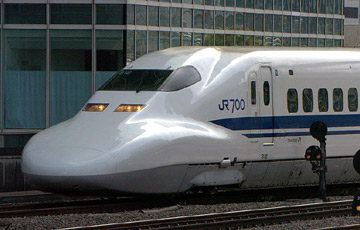 | | 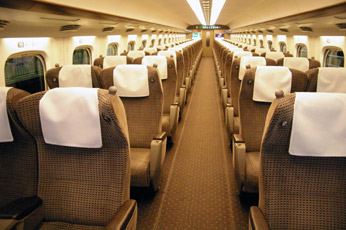 |
| A series 700 train on the Tokaido shinkansen, now used on most fast 'Hikari' & super-fast 'Nozomi' services on the Tokaido Shinkansen between Tokyo, Kyoto, Osaka, Hiroshima & Hakata. Photo courtesy of Peter Geran. | | Green car (1st class) seats on a series N700 train used on the Tokaido and Sanyo Shinkansen linking Tokyo, Kyoto, Osaka, Hiroshima and Hakata. Photo courtesy of James Chuang. |
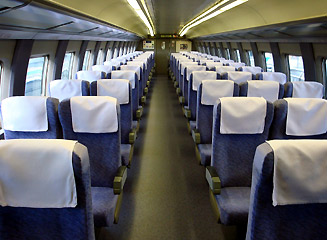 | | 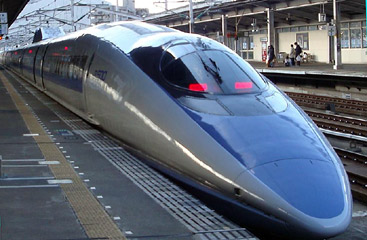 |
| Ordinary (2nd class) seats on a series 500 Shinkansen train. They are arranged "+£ (2 abreast, aisle, 3 abreast across the width of the car), so there's less elbow room than in the Green car seats. Photo courtesy of James Chuang. | | A series 500 train on the Tokaido shinkansen. Amazingly, these now operate the secondary stopping trains, bumped off the front-rank Nozomi services by the series 700 when they were only 8 years old. Photo courtesy of James Chuang. |
Original narrow-gauge network... An extensive network of original 3' 6" narrow-gauge lines remains, covering the whole of Japan and taking you to almost every city and town of any size. Sleeper trains... There are some impressive sleeping-car trains, too, for example Tokyo-Sapporo. These run on the original narrow-gauge lines, but they can save time compared with daytime travel, even using shinkansen.
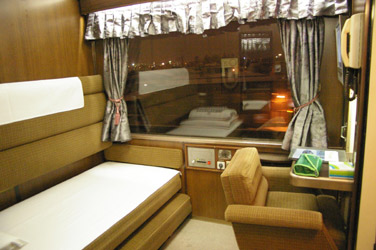 | | 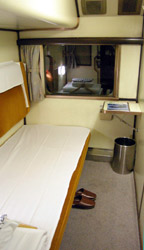 | | 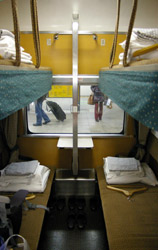 |
| The 'Hokutosei' sleeper train from Tokyo to Sapporo. Accommodation includes a 1st class single room with en suite toilet and shower (above left), a 2nd class single room (above centre) and 2nd class berths in bays of 4 open to a side corridor (above right). Photos courtesy of James Chuang. More information about overnight trains in Japan. |
Sponsored links... |
|











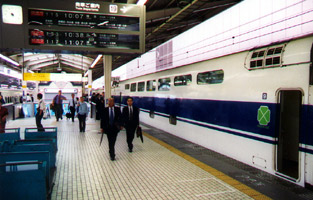 A Japan Rail Pass will probably save you money...
A Japan Rail Pass will probably save you money...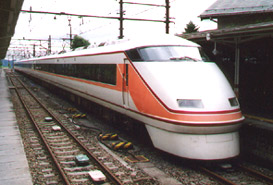
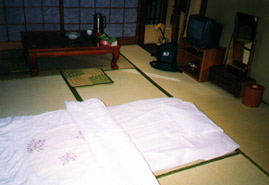 There are two unique types of overnight accommodation which you should try in Japan. 'Ryokans' are traditional Japanese inns. The rooms don't have beds, but are covered with 'tatami' matting on which you place a bedroll. You will probably be offered a hot cup of green Japanese tea when you first arrive. 'Ryokans' are the Japanese equivalent of B&Bs, so they are an inexpensive option compared with hotels, as well as an experience.
There are two unique types of overnight accommodation which you should try in Japan. 'Ryokans' are traditional Japanese inns. The rooms don't have beds, but are covered with 'tatami' matting on which you place a bedroll. You will probably be offered a hot cup of green Japanese tea when you first arrive. 'Ryokans' are the Japanese equivalent of B&Bs, so they are an inexpensive option compared with hotels, as well as an experience.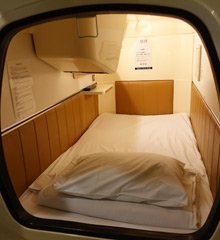 The hotel reception looks like any other hotel reception - just remember to take your shoes off before you walk in, and place them in one of the lockers in the lobby. Upstairs, there will probably be several floors of fibreglass sleeping capsules, each floor with its own locker room and shared showers. You change in the locker room and put your clothes and bags into your locker. Your capsule has radio, alarm clock and TV, and a screen or curtain pulls over the capsule entrance for privacy. Unfortunately, the main clientele for these hotels is Japanese businessmen who have missed their last train home, so they don't tend to cater well for women or couples.
The hotel reception looks like any other hotel reception - just remember to take your shoes off before you walk in, and place them in one of the lockers in the lobby. Upstairs, there will probably be several floors of fibreglass sleeping capsules, each floor with its own locker room and shared showers. You change in the locker room and put your clothes and bags into your locker. Your capsule has radio, alarm clock and TV, and a screen or curtain pulls over the capsule entrance for privacy. Unfortunately, the main clientele for these hotels is Japanese businessmen who have missed their last train home, so they don't tend to cater well for women or couples.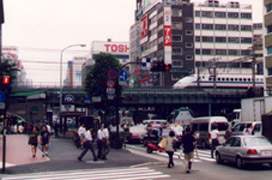 It's impossible to mention every sight or attraction Japan has to offer, but here are some highlights of a visit to Japan that might give you some ideas.
It's impossible to mention every sight or attraction Japan has to offer, but here are some highlights of a visit to Japan that might give you some ideas.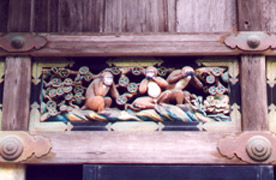 Nikko
Nikko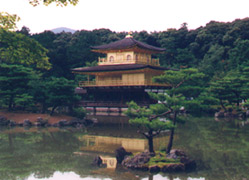 Capital of Japan from 794AD until 1867, Kyoto should be on every visitor's itinerary. Office blocks and pinball arcades in the modern city rub shoulders with tiny wooden houses in the older parts of town. There are several important temples in and around the city, including the famous Kiyomizu-dera Temple, and the Kimkaku-ji Temple or 'Golden Pavilion', pictured right.
Capital of Japan from 794AD until 1867, Kyoto should be on every visitor's itinerary. Office blocks and pinball arcades in the modern city rub shoulders with tiny wooden houses in the older parts of town. There are several important temples in and around the city, including the famous Kiyomizu-dera Temple, and the Kimkaku-ji Temple or 'Golden Pavilion', pictured right.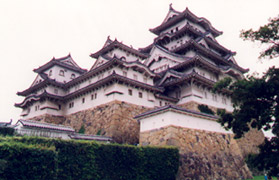 Himeji
Himeji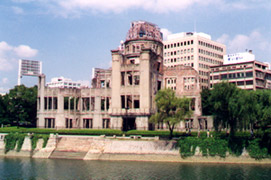






No comments:
Post a Comment